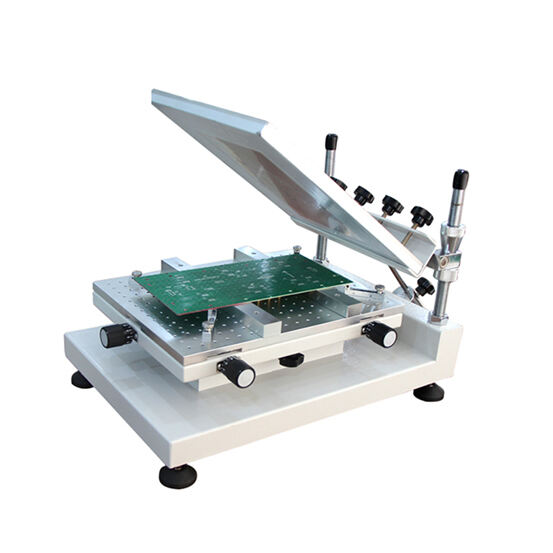Smart Factories and Industry 4.0 Advancements in Electronics Production Machinery
IoT and Digital Twin Technology in Semiconductor and Electronics Production
Bringing together IoT devices with digital twin tech is changing how electronics manufacturing machines work these days. Real time monitoring happens when connected sensors constantly send out data, which feeds into predictive maintenance systems. Some studies from 2024 Smart Manufacturing Research suggest this can cut unexpected machine stoppages down by around 30%. Then there are digital twins, basically computer copies of actual equipment, that let engineers try out new production methods without risking anything. This approach helps factories run smoother while cutting down on wasted materials long before any changes hit the shop floor.
Integrating Industry 4.0 with Legacy Electronics Production Machinery
About two thirds of manufacturers moving toward smart factory setups see updating old systems as their main focus area. When they retrofit those aging machines used for making electronic parts with edge computing components and IoT gateways, these factories can actually talk to AI analysis tools much better now. The approach keeps what companies already invested in intact, but gives them access to live data about how everything runs. Think about it this way: factories can keep using machines that are 30 years old alongside brand new tech standards without having to throw out all their old gear just yet.
Real-Time Monitoring via IoT-Enabled Electronics Production Equipment
Systems connected through IoT technology can track things like energy usage, parts degradation, and product quality down to the millisecond level on factory floors. Adaptive power management becomes possible with these features, something that according to a recent 2024 study cut down wasted energy by about a quarter in chip manufacturing plants. When manufacturers get this detailed look at how their operations are running, they tend to keep making improvements over time. Plus, this kind of monitoring helps bring production closer to those circular economy ideals many companies talk about nowadays. What's interesting is that all this gets done without having to sacrifice either environmental responsibility or product quality standards as facilities scale up their operations.
Advanced IC Packaging and Miniaturization Driving Equipment Innovation
Next-Generation Miniaturization and Advanced Packaging Technologies
The growing need for small but powerful electronic devices has forced manufacturers to upgrade their production equipment to handle components at sub-20 micrometer precision levels. About two thirds of companies are already asking for this kind of capability according to TechFocus data from last year. When it comes to advanced packaging methods such as fan out wafer level packaging or system in package solutions, the requirements get even tougher. Equipment needs to place components with less than five micrometers accuracy while working with multiple different materials simultaneously. Looking ahead, market analysts predict that miniaturization tech will grow at around 14 percent annually until 2030. This forecast makes sense given how fast 5G networks are expanding and the increasing sophistication of medical devices that require tiny components packed into compact spaces.
Key challenges include:
- Thermal management in 3D-IC stacking configurations
- Warpage control during heterogeneous material bonding
- Real-time inspection of micron-scale interconnects
Impact of Advanced Packaging on Electronics Production Machinery Design
Manufacturers are responding to industry needs by equipping die bonders with servo systems that run about 40% quicker than before. At the same time, pick and place machines have started using vision guided alignment that can get within plus or minus 2 micrometers accuracy. For those working with really tiny parts, such as the 01005 size passive components measuring no bigger than 0.4mm by 0.2mm, AI driven control systems keep production yields consistently over 99.4%. Of course there is a price tag attached to all this technology. These improvements typically push machine costs up between 18 to 25 percent. But what manufacturers gain is worth it in the end since error rates drop dramatically by around 63% compared to older equipment according to Semiconductor Engineering from last year. The investment pays off over time thanks to better product quality and faster production speeds across the board.
Additive Manufacturing and 3D Printing in Electronics Production
3D Printing for Rapid Prototyping in Electronics Manufacturing
The time it takes to create prototypes has dropped dramatically thanks to 3D printing technology. Now engineers can get working electronic parts made within just 1 to 3 days, while traditional machining would take several weeks. Techniques like material jetting and extrusion let manufacturers build everything from circuit boards to sensor casings with remarkable precision. A recent report from 2025 found that high resolution additive manufacturing actually allows printing of both conductive paths and insulation layers directly onto components, which cuts down on wasted materials by around 40% compared to older methods where material gets carved away. All this speed means researchers developing smart devices for the Internet of Things and wearable tech can test new ideas much faster than before, giving them a real edge in bringing products to market.
Printed Electronics and the Evolution of PCB Design
The combination of conductive nanoparticle inks with hybrid 3D printing is changing the game for printed circuit board design. These technologies let engineers embed components directly into boards and build complex multi-layer structures that just weren't possible with traditional etching methods. Some vat photopolymerization processes can actually make boards as thin as 0.2 mm while incorporating passive components right into the structure. This cuts down on assembly time for devices where space is at a premium, especially important in medical equipment and aerospace tech where every millimeter counts. A recent study published in the Electronics Fabrication Review points out that all these advances not only boost what circuits can do but also mean fewer people have to manually put things together, which saves both time and money in production.
Innovations in 3D Printing for Flexible and Embedded Circuits
DIW printers are starting to place these stretchy silver polymer mixtures on all sorts of curved and bendable surfaces, which makes them really useful for things like foldable screens and those squishy robot parts we hear about so much lately. Some pretty cool advances have happened recently where machines can print both protective coatings and electrical paths at the same time. This actually makes car sensors last way longer when they're shaken around during tests - something like three and a half times better than before. The whole additive manufacturing field keeps changing fast, so manufacturers need their equipment to handle weird shapes and constantly shifting designs if they want to stay competitive in making electronic components.
Sustainability and Circular Economy in Electronics Production Machinery
Equipment-Level Innovations for Sustainable Electronics Manufacturing
The latest machinery used in making electronics has become much better at saving energy, cutting down power consumption by around 60% when compared to older equipment according to LinkedIn data from 2023. Manufacturers are also turning to biodegradable materials for their circuit boards while building machines that can be easily upgraded rather than replaced entirely. Digital twins have proven particularly effective too. A recent study published in 2024 found that semiconductor factories using these virtual replicas managed to slash material waste by nearly half simply by making instant corrections during production runs. Interestingly, almost eight out of ten companies in the electronics sector prefer to reuse existing parts whenever possible instead of buying brand new components. All these improvements point towards something bigger happening in the industry right now - a gradual move away from traditional manufacturing methods toward what many call circular production practices where resources get reused multiple times before being discarded.
Recyclability Advances in PCB Design and Production Systems
The latest PCB manufacturing systems now come with built-in disassembly features, recovering around 84% of materials during end-of-life processing. That's way better than old school methods which only managed about 32% recovery according to recent research from Journal of Cleaner Production (2024). Manufacturers are switching to halogen free laminates these days and using soldering techniques that don't require solvents, so they can cut down on dangerous waste products while still keeping production speeds up. The closed loop recycling processes being implemented across many factories have actually brought down copper reclamation expenses by roughly 22%. This makes going green financially attractive for businesses too. For companies operating in Europe especially, meeting those strict EU WEEE regulations becomes much easier with these new approaches. Plus consumers are increasingly asking for eco friendly options when purchasing electronic devices, making sustainability not just good practice but also good business sense.
FAQ Section
What is Industry 4.0, and how does it relate to electronics manufacturing?
Industry 4.0 refers to the current trend of automation and data exchange in manufacturing technologies. In electronics manufacturing, it involves the use of smart systems, IoT, and digital twins to enhance production efficiency and quality.
How does IoT technology improve real-time monitoring in electronics production?
IoT technology integrates sensors and connected systems to provide real-time data on machine performance, energy usage, and product quality, allowing manufacturers to make immediate improvements and prevent inefficiencies.
What is digital twin technology's role in electronics manufacturing?
Digital twin technology involves creating a virtual replica of physical equipment which allows engineers to simulate different manufacturing scenarios without impacting the actual process, leading to improved efficiency and reduced waste.
How is 3D printing revolutionizing electronics manufacturing?
3D printing enables rapid prototyping and the creation of complex structures with precision. It minimizes material waste and allows for direct printing of conductive and insulation materials, which accelerates innovation and market release of new products.
What sustainability practices are being adopted in electronics production machinery?
Manufacturers are integrating energy-efficient machinery, biodegradable materials, and systems that allow for easy upgrades. They focus on circular economy practices, including reusing parts and implementing closed-loop recycling processes.
Table of Contents
- Smart Factories and Industry 4.0 Advancements in Electronics Production Machinery
- Advanced IC Packaging and Miniaturization Driving Equipment Innovation
- Additive Manufacturing and 3D Printing in Electronics Production
- Sustainability and Circular Economy in Electronics Production Machinery
-
FAQ Section
- What is Industry 4.0, and how does it relate to electronics manufacturing?
- How does IoT technology improve real-time monitoring in electronics production?
- What is digital twin technology's role in electronics manufacturing?
- How is 3D printing revolutionizing electronics manufacturing?
- What sustainability practices are being adopted in electronics production machinery?

